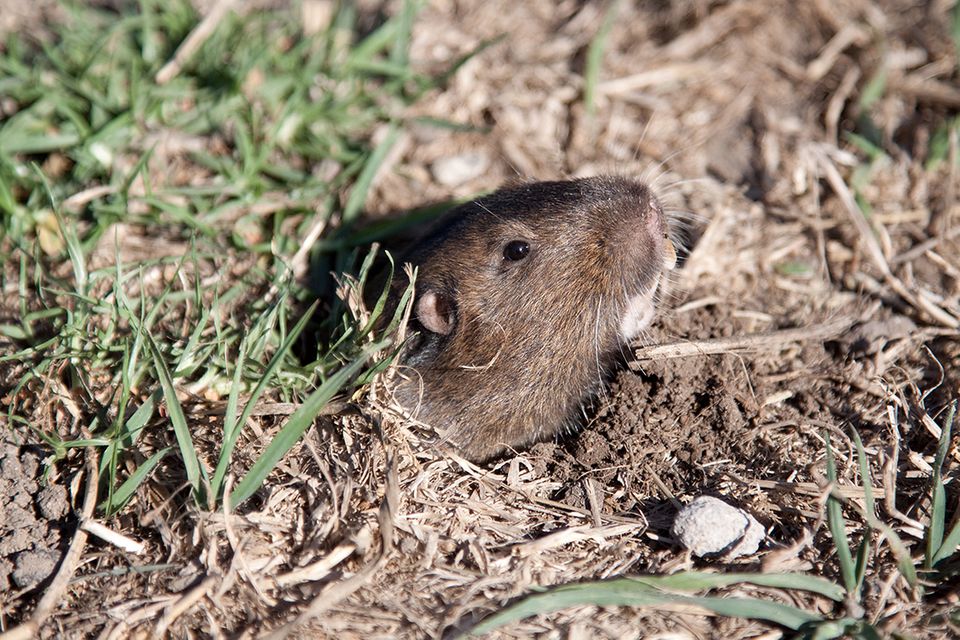The vole is an uninvited guest in the garden, after all, it drives many a plant to its doom. But with a few simple tricks, the rodents can be driven away again.
They have come to eat. The vole, or more specifically the water vole, is very active in the garden and for this reason gets on the nerves of many of its owners. However, simple home remedies or even small tools help to drive the animals out of the garden.
Contents
How to recognize the vole?
Probably the most obvious sign that can betray the activity of a vole? Piles of soil scattered all over the garden. But this is exactly where caution is required, after all, they can also come from another garden inhabitant: the mole. He, however, is one of the strictly protected species that may not be killed or caught.
How can you tell whether a vole or a mole has been at work in the truest sense of the word? On the one hand at the heaps of earth themselves. If they come from the unpopular vole, the holes are usually located at the edge of the mound. The mole, on the other hand, tends to set its entrance in the middle. On the other hand the so-called Verwühlprobe offers itself: Here, a passage is simply uncovered somewhat with the hands. If the passage is closed again after a short time, a vole lives under the mound, which has again ensured order. Moles, rather pragmatically laid out, would simply create a new passage, which, by the way, according to its kind has a broad-oval in contrast to the high-oval shape of the vole passages. Last but not least, it is worth taking a closer look at the piles of earth – if these are offset with roots or other plant parts and have a rather flat and elongated shape, this is also a sign of a vole dwelling.
What does the vole eat?
The vole feeds vegetarian and, to the chagrin of many garden owners, likes to eat roots and tubers. The disadvantage is that it attacks many plants, shrubs and young trees, which then die. And even the flower bed or the accurately maintained garden is often unrecognizable after the activities of the vole, and also decorated with a large number of mounds. The mouse also does not stop at fresh vegetables, fruit and other useful plants.
Voles: What helps?
There are many approaches and means to get rid of the vole. In the trade, for example, you can find several types of vole traps and chemical agents, which, however, finally get to grips with the rodents and can also be dangerous for humans, animals and the environment. It is better to use live traps (for example, box traps) or not so drastic means, which have only the goal of driving away the voles.
Simple tricks to drive away the vole:
Traditional home remedies can help get rid of the uninvited guests. Like the mole, the vole is sensitive to unpleasant odors or sounds. What to go against the nose of the pest? For example, a whey-buttermilk mixture, garlic, onion or the scent of plants such as elderberry or imperial crown. The respective means now only distribute evenly in the underground passages of the vole and close these afterwards again, so that the smell materials can circulate beautifully. For the vole, annoying noises can be created, for example, by a loudly ticking clock or a loudly ticking alarm clock. Simply put them in a tin can and bury them in the vole’s tunnel. Of course, there are also tools for the expulsion by means of noise inform of ultrasonic devices in the trade.

How do I prevent a vole infestation?
But there is also a trick to prevent the uninvited guests from making their home in the garden – simply block their access. How does this work? With the help of fine-meshed wire mesh fencing, which is laid horizontally below the surface. Much less effort is required with special wire baskets for trees, shrubs and plants, which are also available on the market.
Where does the vole live?
The vole by no means only goes in search of food in the earth, in fact it spends most of its life there, in its corridor system lying just below the surface, and only comes outside from time to time. Whether you have peace from the voles in winter? Not really, after all they are active all year round and do not hibernate. Voles have up to 20 young during their mating season, which lasts from March to September. And as if that were not enough, the young of the first litter reach sexual maturity already in the autumn of the same year, so they themselves are ready to ensure the continuity of their own species and to attack our gardens.
What does the vole look like?
After all the negative points, we now come to something positive – the appearance of the little pests. Because admittedly, we think the rodents with their beady eyes are kind of cute. The body of the vole is usually between 12 and 22 centimeters, the tail takes up almost half of the so-called head-torso circumference. The color of the fur, ranges from brown and gray to black and is clearly lighter on the underside.


